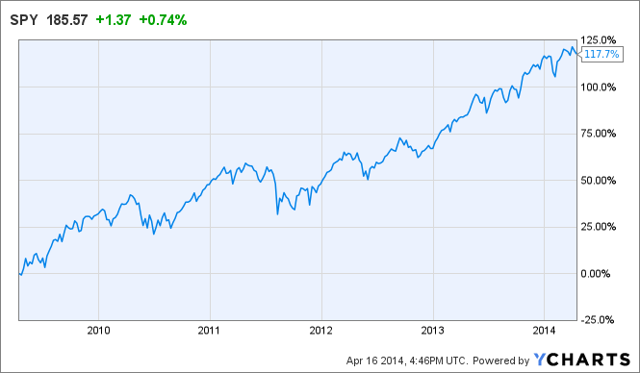Atlanta Equity Professional for Seeking Alpha writes: Invest, Don't Trade: Lessons From The Tax Collector
Summary
- Investors make off much better than traders in capital-gains taxes.
- It pays to be patient in times of market uncertainty.
- Trying to beat the market's pricing action is a dangerous game in terms of taxes.
We are currently still in tax season, and as such I find it useful on a regular basis to remind myself of the big cut that is taken out of my investments each year by federal capital gains taxes. It is also useful to remind myself of some of the tips and tricks that I can use to protect my investment income from the government tax collectors. In fact over the long haul it is possible for capital gains taxes to add up to an enormous chunk of investment profits.
Here in the United States it is required that investors - both individuals and also corporations - pay capital gains taxes on their investment income, just as they do on all other kinds of income. The capital gains tax rates vary of course on the basis of the amount of time that the investment in question is held. The United States government currently defines short-term capital gains as those capital gains that arise from investments that are held for a year or less before being sold. These gains are taxed at a higher rate than longer-term investments. The U.S. government currently defines long-term capital gains as those capital gains that arise from investments that are held for a period of longer than a year. The tax rate on long-term gains varies also, for individuals, with respect to the individuals' particular income brackets. Long-term capital gains taxes are 15% for persons in an income tax bracket that is 25% or above (persons below this income tax bracket do not pay long-term capital gains taxes). Short-term capital gains taxes are more varied, but they are significantly higher than long-term capital gains taxes and can even be as high as 35% for an ordinary income tax bracket of 35%.
For the purposes of U.S. taxation, the way in which the taxable gain or loss that results from the sale of a particular investment asset is determined is cost basis. The cost basis is calculated as equal to the purchase price of the asset, minus any brokerage fees, early redemption fees, or asset depreciation.
There are clear tax strategy lessons from these capital gains rates. Consider an investment of $10,000 in the SPDR S&P 500 ETF (SPY), from 2009-2013. During that time the S&P 500 index increased from 890.35 to 1831.37. And consider first an investor who leaves his investment in the SPDR S&P 500 ETF each year, not removing it for the sake of any temporary pricing advantages. At the end of this time period, his investment would have increased to $20,569, and his capital gains taxes, assuming an appropriate income bracket and a securities sale at the end of this time, would be $1585.
(click to enlarge)

By contrast, an investor who removes his money on a regular basis from the SPDR S&P 500 ETF, even if it is only as little as once per year, would, assuming that his overall investment return is the same as that of the more patient investor, and assuming an equivalent tax bracket (35%), pay a significantly higher amount in capital gains taxes. At the end of the 5-year period, assuming a sale of once a year, his capital gains taxes would amount to $5195. This is 328% of his tax bill if he had simply held the investment the entire time.
2009 $1001
2010 $497
2011 $24
2012 $741
2013 $1434
From an inspection of the difference between the rates of short-term capital gains taxes and those of long-term capital gains taxes, it is evident that in circumstances of uncertainty the actions of investors do have advantages - significant, in fact - over those of traders. Buying securities and then leaving one's money in those securities, regardless of the roller-coaster ups and downs of the daily price action, is, at least in terms of taxes, far more prudent than trying to time the market on a daily or weekly basis. So in circumstances in which one is confident in the overall narrative of a particular company - in circumstances in which a particular company does have good long-term fundamentals - it probably is usually best to trust the long-term wisdom of the market, rather than to try to take advantage of temporary price swings, play earnings reports, or react to market emotions.
Finally, it is always important to notice also that there are in the United States tax write-offs for capital losses and that it is sometimes effective to sell securities at a loss in order to offset capital gains. Investors usually can deduct net capital losses of up to $3000 for any given tax year. This strategy can potentially work if one has not bought any new shares of the security in question within the past month and does not intend to purchase any new shares of that security in the next month either. But same-security share purchases that occur within thirty days before and after the sale date in question are disqualified by virtue of being a 'wash sale,' and do not count as an income tax loss for government purposes.
0 comments:
Post a Comment